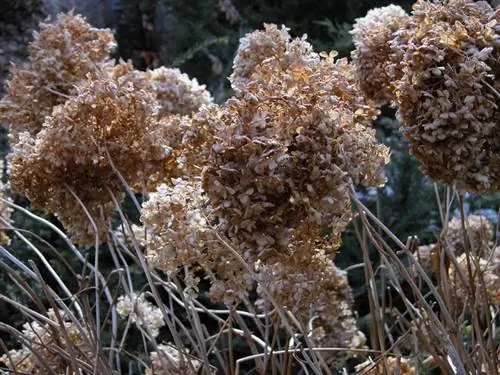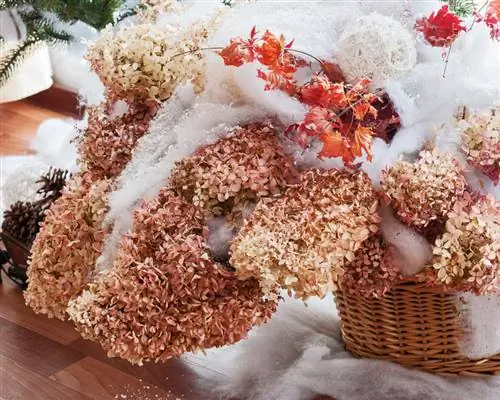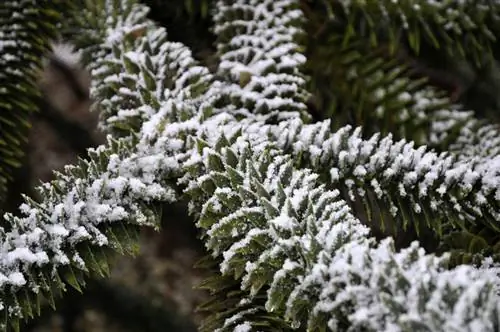- Author admin [email protected].
- Public 2023-12-16 16:46.
- Last modified 2025-06-01 06:02.
Hydrangeas only have reliable winter hardiness when they are older. At least for the first five years, the magnificent flowering bushes wage a silent battle against the icy winter temperatures. The following tips for the winter show how hydrangeas in beds and pots emerge victorious from this dispute.

Modify care in late summer - this is how it works
From August onwards, other care aspects come into focus than in spring and summer. For example, too much water can affect bud formation. Nitrogen-rich fertilizer causes young shoots to sprout, reducing winter hardiness. By adjusting the care in late summer as follows, you can initiate a successful wintering:
- Fertilize hydrangeas in August with potassium, such as Patentkali or Thomaskali
- Stop giving fertilizer from the beginning of September
- Gradually reduce the amount of watering water without letting the soil dry out
Potassium has, among other things, the special property of strengthening cell walls and lowering the freezing point in cell water. The gradual reduction in the amount of watering signals to hydrangeas that it is now time for bud formation. From early autumn onwards, only water when the substrate has dried to a depth of around 3 cm.
Don't cut hydrangeas before winter - that's why the scissors have to rest
The withered flower heads serve as natural winter protection for the bud bases underneath. Therefore, cut back hydrangeas in early spring at the earliest. At this time you can also see whether and to what extent young branches have frozen so that you can cut them back to he althy wood.
Young hydrangeas in the bed always have winter protection - this is how you do it right
It takes a few years for hydrangeas to develop a stable winter hardiness in the bed. We therefore recommend light winter protection for at least the first 5 years. This is how it works:
- Before the first frost, pile up the root disc with leaves, straw or brushwood
- Wrap the branches with breathable, translucent fleece
In regions with harsh winters, these precautions should be taken every year. Within hardiness zones Z8 and Z7, established hydrangeas can survive the rigors of winter on their own.
Never pot hydrangeas without a winter coat - you should pay attention to this
In the pot, the root balls of hydrangeas are more vulnerable to severe frost than deep in the garden soil. Before winter, place the bushes on a block of wood in front of a protective house wall. Cover the pot with several layers of bubble wrap and cover the substrate with leaves or sawdust. A hood made of light and air-permeable fleece protects the buds on the branches from frostbite.
Tip
You can save yourself the gardening effort involved in protecting against frost and snow if you cultivate hydrangeas as houseplants. The romantic pieces of jewelry bloom for many weeks on the bright windowsill at 15 to 18 degrees Celsius. During the winter the flower beauties stay in a frost-free place in the bedroom or unheated winter garden.






